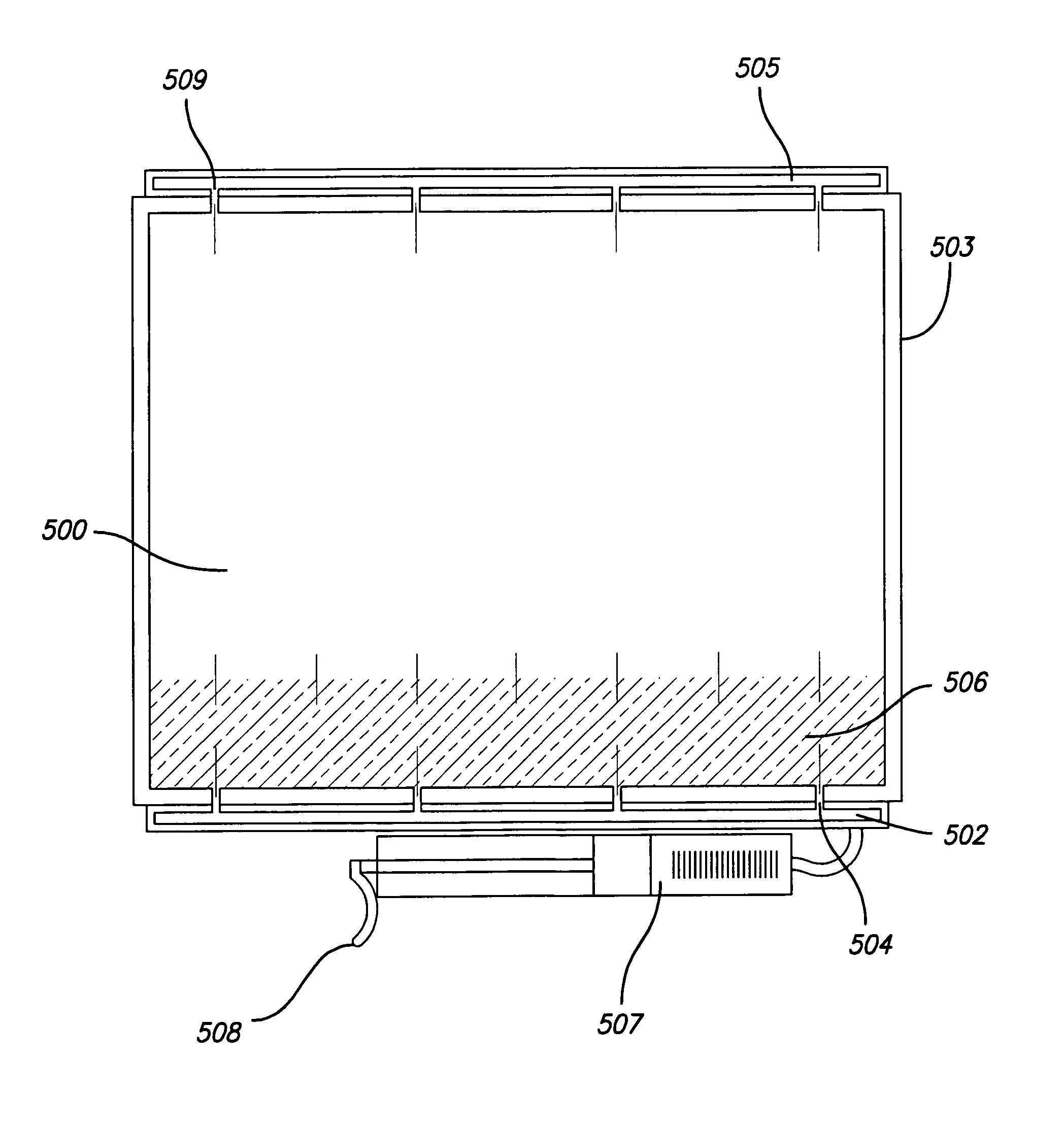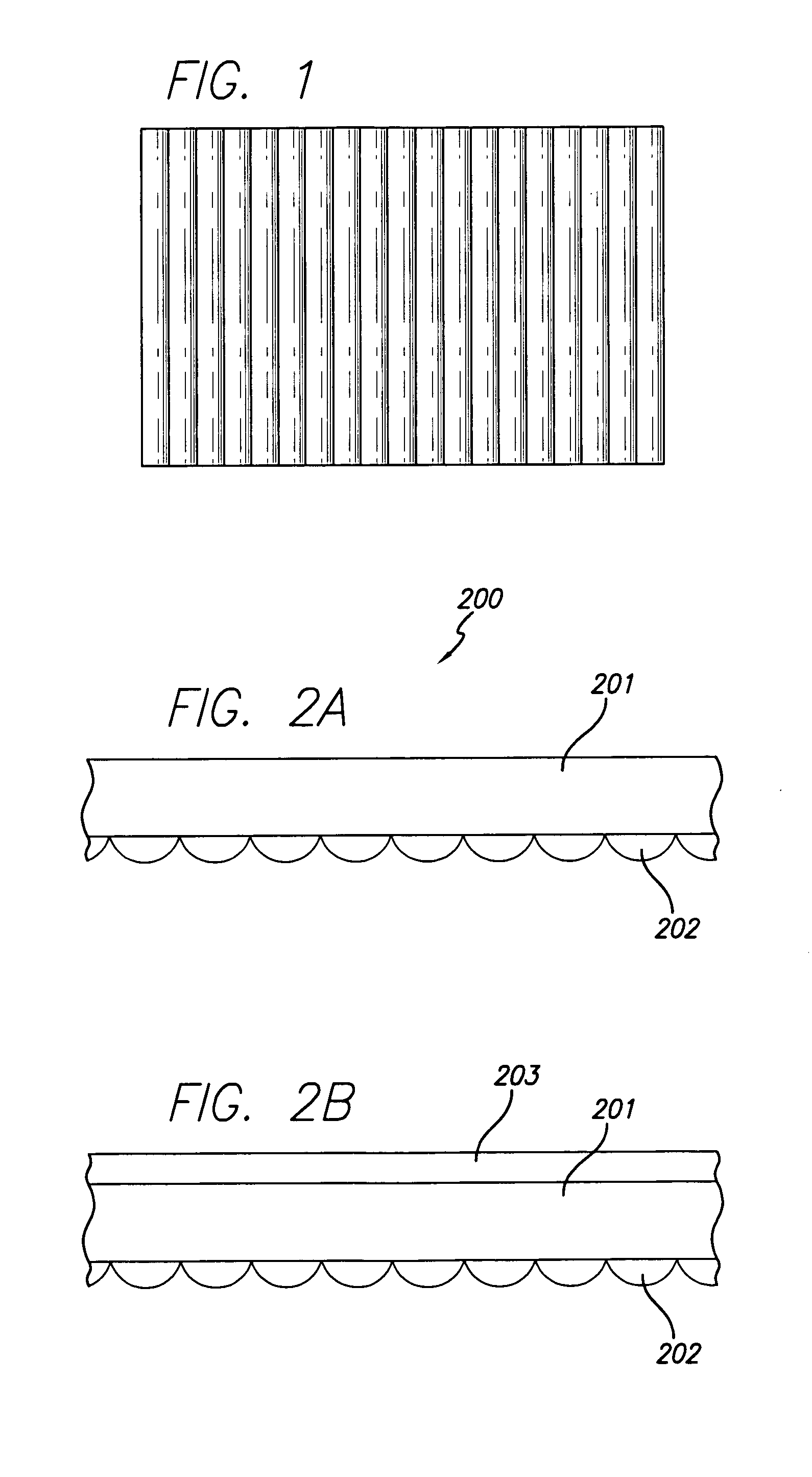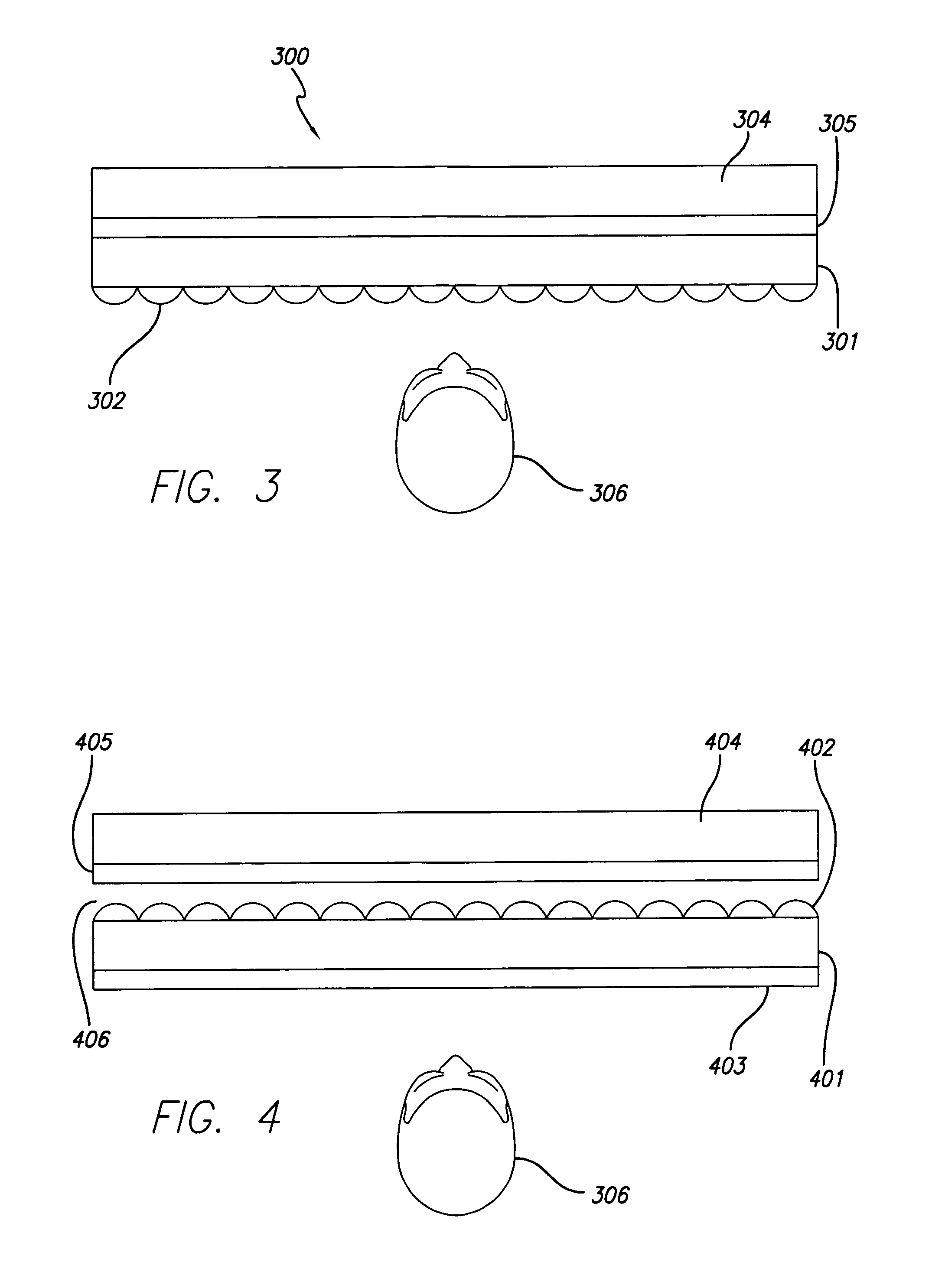Autostereoscopic lenticular screen
a technology of lenticular screen and lenticular surface, which is applied in the direction of instruments, lighting and heating apparatus, optical elements, etc., can solve the problems of affecting the intelligibility of displayed images, and affecting the enjoyment of viewing displays
- Summary
- Abstract
- Description
- Claims
- Application Information
AI Technical Summary
Benefits of technology
Problems solved by technology
Method used
Image
Examples
Embodiment Construction
[0020]FIG. 2A shows a cross section of a lenticular screen 200 made up of lenticules 202, which are the topmost or sector-like surfaces of long cylinders, as deposited on substrate 201. Since our concern is for lenticular screens made to match the needs of electronic flat panel displays, we favor lenticules deposited on dimensionally stable glass; that is, on glass whose thermal expansion properties match that of the display screen so that the alignment of lenticule and pixel will remain constant. However, there is no loss of generality in our teaching if the substrate is some material other than glass, or if there is no substrate at all and the lenticular screen is a part of the substrate and made of one material.
[0021]Our concern is with adding our screens to flat panel displays. We are constrained with regard to the thickness of a given panel cover-glass or faceplate. Each panel has a cover-glass that affects our ability to locate the lenticules with regard to the pixels themselv...
PUM
 Login to View More
Login to View More Abstract
Description
Claims
Application Information
 Login to View More
Login to View More - R&D
- Intellectual Property
- Life Sciences
- Materials
- Tech Scout
- Unparalleled Data Quality
- Higher Quality Content
- 60% Fewer Hallucinations
Browse by: Latest US Patents, China's latest patents, Technical Efficacy Thesaurus, Application Domain, Technology Topic, Popular Technical Reports.
© 2025 PatSnap. All rights reserved.Legal|Privacy policy|Modern Slavery Act Transparency Statement|Sitemap|About US| Contact US: help@patsnap.com



